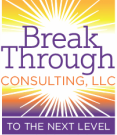Planning Ahead
Tips for Creating a Healthier Work Environment
According to PMI, in 2017, 10% of the expenditure on projects was wasted due to poor project performance. While this is a 20% improvement over previous years, we can still do better. There are some positive trends that, if continued, should improve this number further in 2018.
We are seeing more:
What are some of the steps that you take to ensure that you are healthy in your organization, to create a healthy organization, and to be successful? What questions do you have? I'm interested in hearing from you. Email me with questions and answers..
According to PMI, in 2017, 10% of the expenditure on projects was wasted due to poor project performance. While this is a 20% improvement over previous years, we can still do better. There are some positive trends that, if continued, should improve this number further in 2018.
We are seeing more:
- Attention paid to paying attention. Employees are more likely to stay in their jobs if they believe their manager cares about their well being.
- Standing desks. Sitting for eight hours (or more) a day is being compared to smoking in terms of how negative health impact.
- Smarter Meetings led by people who recognize the need for "bio breaks," stretches, clearly defined agendas, and listening.
- Realistic project plans that are achievable and take into account people's need to sleep, see family, have a non-work life.
- If people work for you or with you, take the time to listen when they talk to you. If you don't have time in the moment and it is not urgent, schedule time to have the conversation. When someone is talking to you, shift your eyes and focus away from your screen and look at them and listen to them. While it may feel like it is precious moments that you do not have to spare, the truth is it is more time consuming to try to multi task than to shift your attention, because, in fact, we cannot multi-task. It is estimated that we lose about 40% of our productivity when we attempt to multi-task.
- More and more organizations are investing in standing desks and you can even procure affordable options for your home office. Ask. Organizations are often willing to meet ergonomic needs when they are requested. If you can't get one (or provide one for your team), be creative. Be sure to stand up and stretch frequently. Step away from the computer, walk down the hall to talk to someone rather than emailing or calling them, or use the top of a file cabinet to jot some notes. I often recommend storing needed files at inconvenient places, forcing yourself to stand up and walk. Frequent physical movement has been shown to improve concentration and increase creativity. It is often during the periods of movement that the most creative ideas and solutions emerge.
- If you are in a meeting led by someone else, be sure to ask for an agenda at the beginning and clarification of any action items at the end. If it is your meeting, consider starting it five or ten minutes after the hour or ending it five or ten minutes before the hour is up. Publish an agenda in advance; ensure clear decision points and direction at the end; and, especially if it is a long meeting, offer stretch breaks, water, and even suggest that people change seats halfway through. Changing perspectives physically can actually change how we look at things.
- Estimating realistically for a project is a critical success factor. If you are creating a project plan, be realistic and create reasonable time frames. The belief that working longer hours, skipping lunch, and missing out on family time yields increased productivity is debunked by research and by what we know of how the brain works. There is ample evidence that sleep improves productivity and that working through lunch, never seeing the sun, and not taking breaks decreases productivity. Moreover, employees are more successful and stay longer in their job when they feel supported in their jobs, realistic achievable work goals is one way to support team members. An impossible timeline decreases morale and reduces productivity, thus increasing the risk of project failure.
What are some of the steps that you take to ensure that you are healthy in your organization, to create a healthy organization, and to be successful? What questions do you have? I'm interested in hearing from you. Email me with questions and answers..
